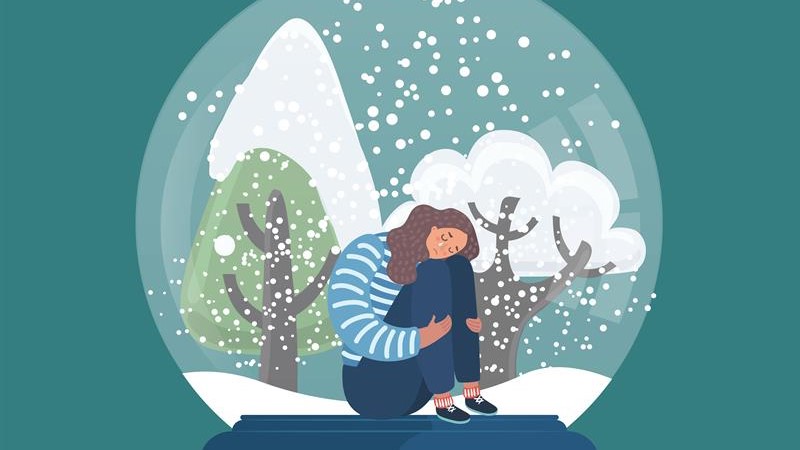Megan LeBoff
Staff Writer
As the winter season rolls around, many start to feel the effects of seasonal depression. But what does it mean? And how can you treat it?

It’s that time of year. The air is getting colder, and the sun is in hiding for most of the day.
For some, this change in climate is welcomed, as the change of weather signals the start of holiday festivities. But for others, the change in weather means the start of a sort of seasonal sadness. And these “winter blues” could mean more than you think.
Seasonal affective disorder, or SAD, is a form of depression directly linked to weather and daylight changes brought about during fall and winter. This phenomenon is more commonly known as seasonal depression.
And this disorder is more common than you might think. In fact, according to healthresearchfunding.com, it is estimated that SAD affects nearly 10 million Americans every year. And although all age groups are susceptible to SAD, women are 3 times more likely to suffer from it than men.
Genetics also play a part in deciding who experiences seasonal depression. According to Reggis College, having a family history of SAD correlates with a higher prevalence of the condition.
Unfortunately, it’s not entirely clear what causes seasonal depression. Some research suggests that people with SAD may have disrupted levels of serotonin (a chemical in your brain that regulates mood) and melatonin (a hormone that helps maintain your natural sleep cycle). Such disruptions would make it hard to adjust to seasonal changes in day length, explaining why SAD is more common in areas farther from the equator, where the sun rises the latest and sets the earliest during winter.
So what does suffering from SAD entail? Seasonal depression has mostly the same symptoms as year-round depression: fatigue, trouble sleeping, agitation, anxiety, difficulty concentrating, and suicidal thoughts. The only difference being the seasonality of it.
If you feel you may be suffering from SAD, it is important to know it is very treatable. Common treatment options include dawn simulators and sunlights, which are devices that are meant to simulate longer daylight hours, vitamin D supplements, omega 3 supplements, and exercise. All of which are proven to help treat SAD.
I talked to Irvine Highschool Counselor Abby LeBoff about Seasonal Depression. “In my experience, SAD is not that common in high school.” She says “A lot of it has to do with living in southern California so we don’t have as severe or extreme winter weather; we do have a lot more sun, which influences SAD.”
In terms of treating SAD, “One of the steps that can be taken is to get outside,” she says “also, increase the socialization you have with other people, rather than most people, when they are experiencing that, want to avoid activities or being around others.”
“Importantly” she adds “If your sadness is causing any severe symptoms, that you are having any thoughts of hurting yourself or others, or suicidal ideations, you talk to a trusted adult or professional and get the help that you need.”
National Suicide Prevention Lifeline: 1-800-273-8255
